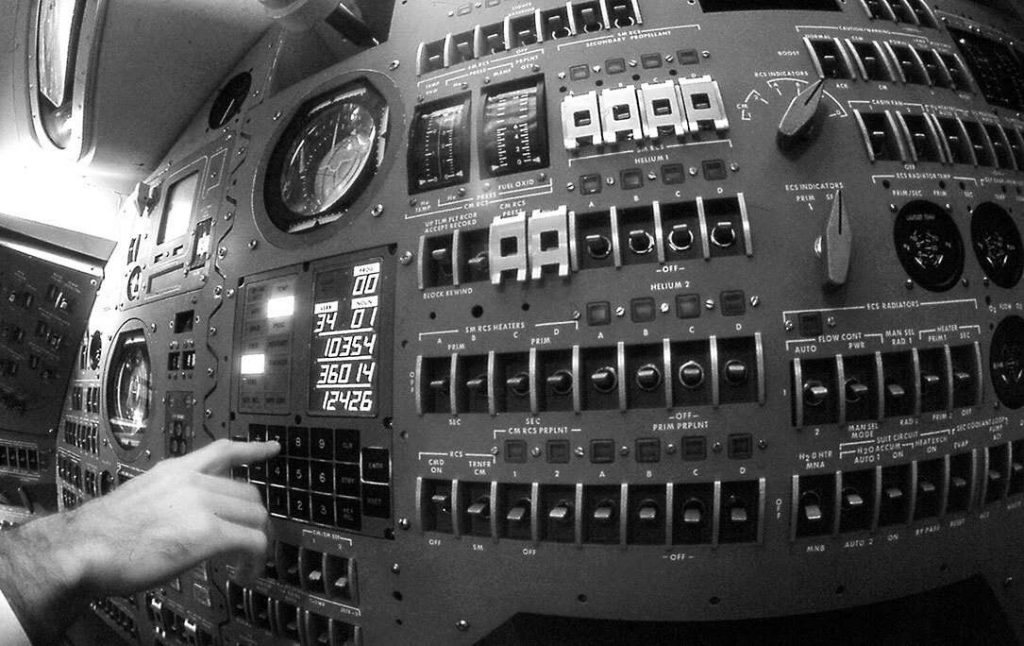In observance of the 50th anniversary of the Apollo 11 moon landing, I wrote a post on the technology that got our astronauts there. (Lots of technology behind the moon landing.) A week or so later, I saw another article in EE Times (this one by George Leopold) on the subject, with a slightly different take than what I covered. So here goes.
The thrust (sorry: couldn’t resist) of Leopold’s article is that:
The Soviets had bigger boosters that could loft larger payloads, but the American emphasis on weight reduction and its emerging and innovative electronics sector proved decisive in reaching the moon by the end of the 1960s. (Source: EE Times)
The American’s were able to get the weight down because of breakthroughs in the emerging field of semiconductors. At the heart of the development was the guidance computer built by the MIT Instrumentation Laboratory (what is now Draper Labs), which used integrated circuit logic devices from TI, Motorola Semiconductor, Westinghouse Electric and Fairchild, to do its magic. But these devices weren’t exactly sitting around on the shelf.
Once the production lines began cranking out product in 1962, the MIT engineers faced other supply chain issues. They described the problem this way:
“Maintaining a source of supply of quality integrated circuits could be difficult over the production life of the Apollo Computer. The semiconductor industry was dedicated to advancing the ‘state of the art’ and to accomplish this goal it was plagued with process changes, inadvertent and intentional. Such changes contribute
d to uncertainties in a semiconductor product’s functional stability, quality, reliability and production life. Considering the critical reliability and production life time requirements of the [guidance computer] in the Apollo System, an approach to IC procurement had to be developed which would insure a supply of quality components.”
This is a familiar tale of missed deadlines – “teething problems”, in Leopold’s words – but the problems worked themselves out. To achieve the timeliness reliability NASA required, they standardized “on a single logic component.” With the volume needed for the moon launch and landing, the prices for logic devices went down rapidly. In less than a year (December 1961 to October 1962) the unit cost for Fairchild devices fell from $120 to $10.
One of the drivers behind Apollo 11 was to post a space race win against the Russians. While they may have gotten the first man into space, we scored the first moon landing, and an important factor was our “superior electronic components and novel systems integration approaches.” While the Soviet space program may have had “otherwise superior rocketeers”, we beat them “in terms of development periods, quality, and general scientific-technical level.”
As early astronauts were fond of saying, “No bucks, no Buck Rogers.” The same was true of space technology: No electronics, no moon landing.
As we set a goal for the Mars landing, you can bet that our electronics will be once again at the fore!

 d to uncertainties in a semiconductor product’s functional stability, quality, reliability and production life. Considering the critical reliability and production life time requirements of the [guidance computer] in the Apollo System, an approach to IC procurement had to be developed which would insure a supply of quality components.”
d to uncertainties in a semiconductor product’s functional stability, quality, reliability and production life. Considering the critical reliability and production life time requirements of the [guidance computer] in the Apollo System, an approach to IC procurement had to be developed which would insure a supply of quality components.”